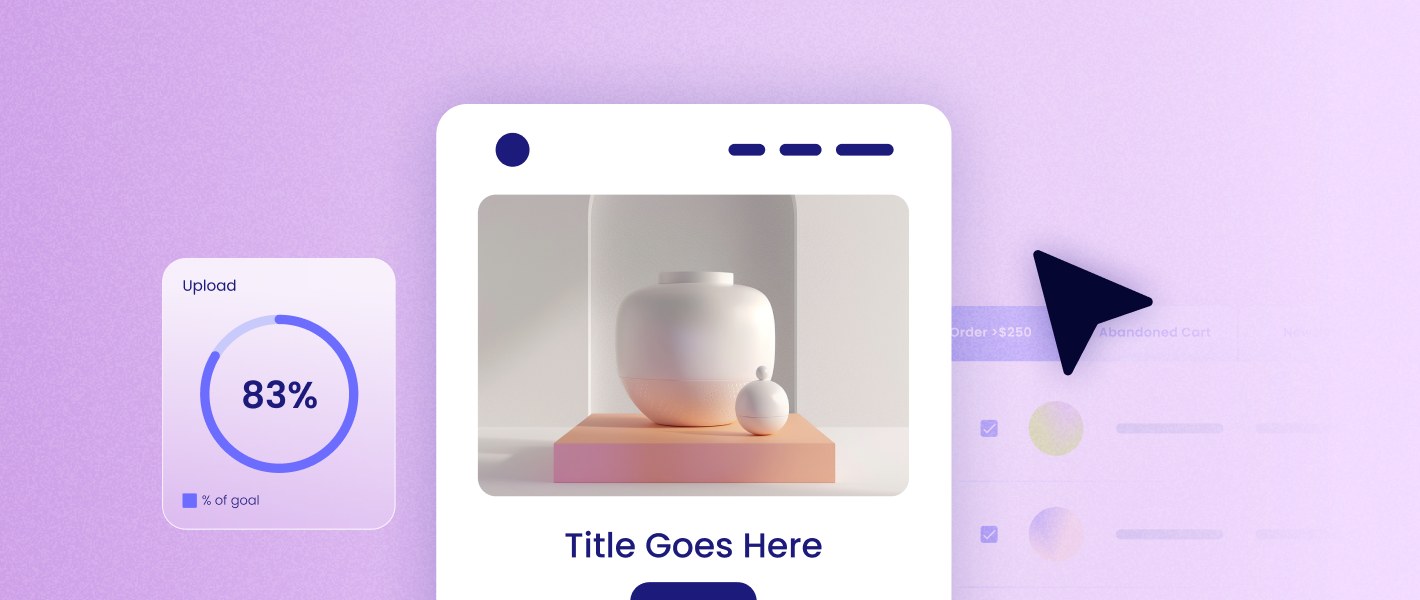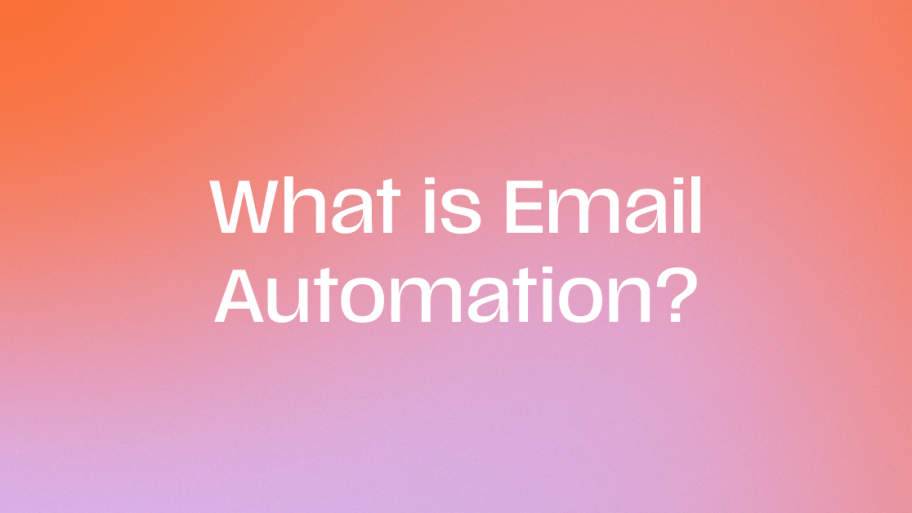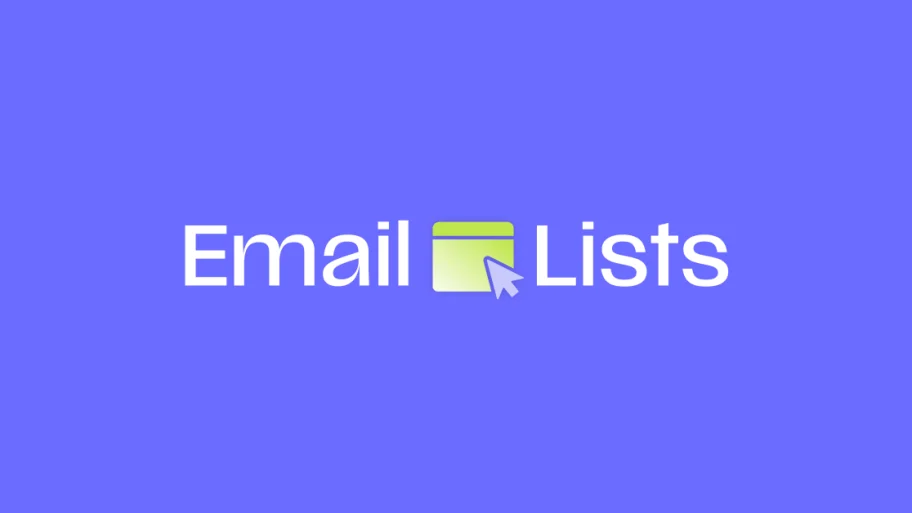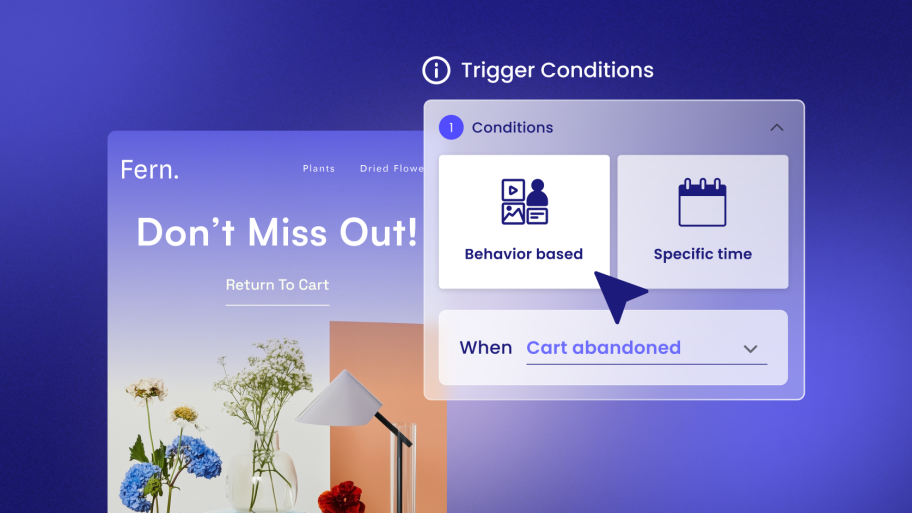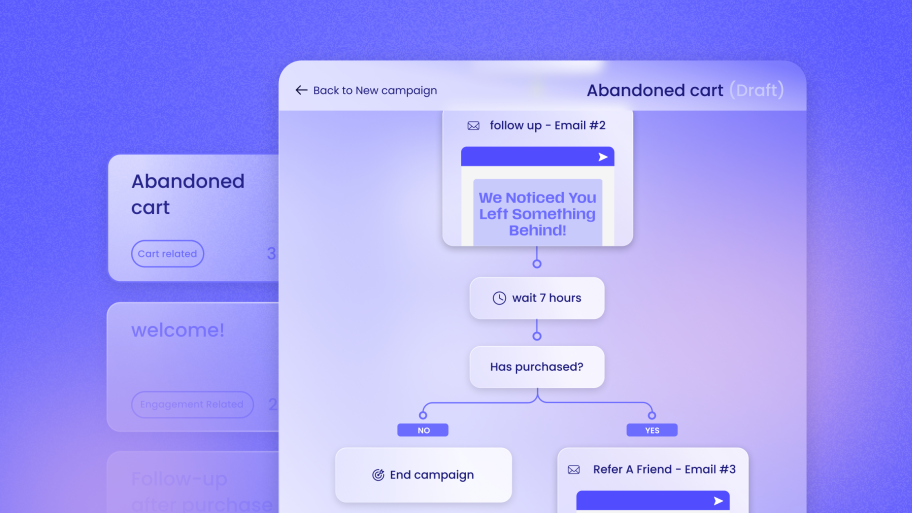The right platform isn’t just a tool; it’s a central hub for your customer engagement strategy. It can automate your outreach, segment your audience for hyper-targeted messaging, and provide the data you need to understand what truly resonates with your customers. With the right system, you can turn one-time buyers into loyal fans and casual visitors into paying customers. This guide is designed to help you navigate the options and find the perfect fit for your needs. We’ll explore the top contenders for 2025, breaking down their strengths, features, and ideal use cases, so you can make a choice that not only meets your current needs but also scales with your future ambitions.
Key Takeaways
- Integration is Everything: The best platforms in 2025 are those that integrate seamlessly with your existing website and e-commerce infrastructure. A native solution, especially for WordPress and WooCommerce, eliminates countless headaches related to data syncing, plugin conflicts, and workflow disruption.
- Unify Your Channels: Managing SMS and email from a single platform is no longer a luxury—it’s a necessity. A unified approach provides a holistic view of the customer journey, enabling more cohesive and effective marketing campaigns.
- Automation Drives Growth: The ability to automate key communication flows, such as abandoned cart reminders, welcome series, and re-engagement campaigns, is crucial for scaling your business. Look for platforms with intuitive, powerful automation builders.
- Focus on the Creator Economy: The needs of web creators, freelancers, and agencies are a major driving force in platform development. The ideal solution empowers these professionals to offer more value to their clients and build recurring revenue streams.
- Data is Your Compass: Actionable, real-time analytics are non-negotiable. The ability to track open rates, click-through rates, conversions, and revenue attribution directly within your dashboard is essential for optimizing your strategy and proving ROI.
- Simplicity Wins: A complex tool that no one on your team can use is worthless. The leading platforms prioritize user experience, offering intuitive interfaces, drag-and-drop builders, and pre-built templates that lower the barrier to entry for powerful marketing.
The Top 7 SMS and Email Marketing Platforms for 2025
Navigating the sea of marketing platforms can be overwhelming. To simplify your search, we’ve analyzed the top solutions available today, focusing on their features, ease of use, integration capabilities, and overall value. Here are the seven platforms that stand out from the rest.
1. Send by Elementor: The Ultimate WordPress-Native Toolkit
For the millions of businesses, agencies, and freelancers whose world revolves around WordPress and WooCommerce, Send by Elementor emerges as the definitive, seamlessly integrated communication solution for 2025. It wasn’t just designed to work with WordPress; it was born from it. This fundamental distinction is what sets Send apart, transforming it from just another marketing tool into an essential component of the modern web creator’s toolkit. It’s built on the premise that your marketing should not be a separate, bolted-on function but a natural extension of your website.
The core philosophy behind Send is simple: empower web creators to do more for their clients. For too long, creators have built stunning websites only to hand off the crucial task of customer communication to complex, third-party platforms. This creates a disjointed experience for the client and represents a massive missed opportunity for the creator. Send bridges this gap by bringing essential marketing tools—Email, SMS, Automation, and Analytics—directly into the familiar WordPress dashboard. This allows creators to expand their services, foster long-term client relationships, and unlock valuable recurring revenue streams, all while staying within the ecosystem they know and trust.
Why Send by Elementor Leads the Pack
What makes Send the top choice, particularly for the WordPress ecosystem? It’s the combination of native integration, a comprehensive feature set, and an unwavering focus on simplifying the complex.
- Truly WordPress-Native: This is Send’s most significant advantage. It installs and operates like any other high-quality plugin, eliminating the frustrating process of syncing data between your website and an external marketing platform. Customer data, purchase history, and contact information from WooCommerce and WordPress forms are available instantly. This means no more dealing with broken APIs, data lags, or plugin conflicts that can slow your site down. The user interface feels familiar because it follows WordPress design principles, drastically reducing the learning curve.
- All-in-One Communication Hub: Send consolidates all the critical tools you need into one elegant package. You’re not just getting an email tool and an SMS tool; you’re getting a fully-featured marketing automation platform.
- Email & SMS Marketing: Design beautiful, responsive emails with a drag-and-drop builder and ready-made templates inspired by Elementor’s design best practices. Simultaneously, leverage the immediacy of SMS to cut through the noise for time-sensitive offers or shipping updates.
- Powerful Automation Flows: This is where Send truly shines. You can easily set up essential automated workflows that work 24/7 to grow your business. Pre-built templates for Abandoned Cart Recovery, Welcome Series, and Customer Re-engagement mean you can have sophisticated campaigns running in minutes, not hours.
- Advanced Audience Segmentation: Don’t just blast messages to your entire list. Send allows you to create dynamic segments based on customer behavior, purchase history, location, and more. Send a special offer to your most loyal customers, a win-back campaign to those who haven’t purchased in a while, or a welcome discount to new subscribers.
- Effortless Setup and Management: The platform is designed with a “set-and-forget” mentality. The intuitive interface and pre-built automation recipes lower the barrier to entry, making powerful marketing accessible even to those who aren’t marketing gurus. For an agency or freelancer, this means you can set up highly effective campaigns for a client and manage them efficiently, without a massive time investment.
- Demonstrable ROI and Analytics: Proving your value to a client is paramount. Send provides clear, real-time analytics right within the WordPress dashboard. You can easily track key metrics like open rates, click-through rates, and, most importantly, revenue attribution. The dashboard clearly shows how much money your email and SMS campaigns are generating, making it simple to demonstrate a powerful return on investment.
Who is Send by Elementor For?
While any WooCommerce store can benefit immensely from Send, it is uniquely tailored for web creators, freelancers, and agencies.
- For Creators New to Marketing Services: If you have clients asking for “marketing stuff” but you don’t know where to start, Send is your perfect entry point. You can begin by offering a simple, high-impact service like setting up an abandoned cart automation. It’s an easy win that provides immediate, measurable value to your client and opens the door to a deeper partnership.
- For Experienced Agencies: If you’re tired of juggling multiple marketing tools or outsourcing this work, Send allows you to bring it all in-house. You can seamlessly add email and SMS automation, sophisticated welcome flows, and retention campaigns to your client service packages. This strengthens your client relationships, increases the lifetime value of each client, and positions your agency as a true growth partner.
In essence, Send by Elementor is more than just a marketing platform. It’s a business growth tool for the modern web creator. It acknowledges that building the website is just the beginning and provides the tools needed to help clients succeed long after launch. By focusing on deep integration, ease of use, and demonstrable results, Send empowers creators to build stronger businesses for themselves and their clients.
2. Klaviyo
Klaviyo is a marketing automation platform known for its powerful data integration capabilities, particularly with e-commerce platforms like Shopify, BigCommerce, and Magento. It provides a unified view of the customer by pulling in data from various sources to build detailed customer profiles.
- Core Features: The platform’s primary offerings include email and SMS marketing, advanced segmentation, and automation. Its segmentation tools allow users to create highly specific audiences based on event data (what customers do) and profile data (who customers are). The automation builder, known as “Flows,” enables the creation of behavior-triggered sequences for things like abandoned carts, browse abandonment, and post-purchase follow-ups.
- Data and Analytics: A key aspect of Klaviyo is its focus on data science. It offers predictive analytics features, such as predicting a customer’s next order date, lifetime value, and churn risk. The reporting dashboard provides insights into campaign performance, flow performance, and revenue attribution, allowing users to measure the direct impact of their marketing efforts.
- Integrations: Klaviyo has a large library of pre-built integrations with e-commerce platforms, payment gateways, and other marketing tools. This allows for the consolidation of customer data from across the tech stack into a single system for more personalized marketing.
- Target Audience: The platform is primarily aimed at e-commerce businesses, especially those in the small to medium-sized business (SMB) and mid-market segments. Its feature set is designed to help online retailers leverage their customer data to drive sales and increase customer lifetime value.
3. Mailchimp
Mailchimp is one of the most well-known email marketing platforms, having built its brand on being an accessible tool for small businesses. Over time, it has expanded its feature set to include a broader range of marketing channels and functionalities.
- Core Features: At its core, Mailchimp offers an email editor with a wide variety of templates, list management, and reporting. It has since added features like marketing automation, landing pages, digital ads, and a CRM. The platform allows users to create multi-step customer journeys based on conditions and triggers. SMS marketing is available as an add-on in certain regions and plans.
- Ease of Use: Mailchimp’s user interface is generally regarded as clean and user-friendly, which has contributed to its popularity among beginners and businesses without dedicated marketing teams. The drag-and-drop email builder simplifies the process of creating professional-looking campaigns.
- Integrations: The platform offers a vast marketplace of integrations, connecting with hundreds of third-party applications, including e-commerce platforms, CRMs, and content management systems. This allows users to sync data and automate workflows between Mailchimp and other tools they use.
- Target Audience: Mailchimp’s primary audience has traditionally been small businesses, bloggers, and entrepreneurs. While it has introduced more advanced features to cater to larger businesses, its brand and pricing structure remain most appealing to those just starting with email marketing or those with straightforward needs.
4. Omnisend
Omnisend is an e-commerce-focused marketing automation platform that combines email, SMS, and web push notifications into a single workflow. It is designed to help online stores communicate with their customers across multiple channels from one central location.
- Core Features: The platform’s main feature is its automation workflow builder, which allows for the integration of email, SMS, and push notifications into the same sequence. It provides pre-built templates for common e-commerce scenarios like welcome series and cart abandonment. Omnisend also includes list-building tools such as pop-ups, landing pages, and interactive sign-up forms.
- Channel Integration: A key differentiator for Omnisend is its native integration of multiple channels. Users can add SMS messages or push notifications to their automation flows just as easily as they would add an email, creating a multi-channel experience for the customer.
- E-commerce Focus: Omnisend is built specifically for e-commerce businesses. Its integrations with platforms like Shopify, BigCommerce, and WooCommerce are deep, allowing for robust segmentation based on shopping behavior, campaign engagement, and customer profile data.
- Target Audience: The platform is designed for e-commerce merchants who are looking for a marketing automation solution that can handle multiple channels seamlessly. It is suitable for businesses of various sizes, from small shops to larger online retailers, that want to create a more immersive and multi-faceted communication strategy.
5. Attentive
Attentive is a mobile messaging platform that specializes in SMS and MMS marketing. It focuses entirely on text-based communication and has built a comprehensive feature set around this channel.
- Core Features: Attentive’s platform includes tools for growing an SMS subscriber list, such as pop-ups and other sign-up units. Its core offering is its campaign and journey builder, which allows for the creation of personalized, automated text message flows. It supports features like two-way messaging, real-time responses, and A/B testing for SMS campaigns.
- Personalization and Compliance: The platform emphasizes personalization at scale, using customer data to trigger relevant messages. It also has a strong focus on compliance, providing tools and guidance to help businesses adhere to regulations like the Telephone Consumer Protection Act (TCPA).
- Integrations: Attentive integrates with a wide range of e-commerce platforms, help desks, and other marketing software. These integrations enable the use of data from other systems to power segmentation and trigger automated SMS journeys.
- Target Audience: Attentive is built for e-commerce and retail brands that want to make SMS a primary channel for revenue generation. It is often used by larger brands and high-growth e-commerce businesses that have the resources to invest heavily in a dedicated mobile messaging strategy.
6. Postscript
Postscript is another SMS marketing platform designed exclusively for e-commerce stores using Shopify. Its deep integration with Shopify allows it to leverage a wealth of customer data for highly targeted and automated text message marketing.
- Core Features: The platform enables users to create and manage SMS campaigns, set up automation triggers (for abandoned carts, shipping notifications, etc.), and engage in two-way conversations with customers. It provides tools for list growth, segmentation, and analytics focused on the SMS channel.
- Shopify Integration: Postscript’s defining characteristic is its native connection to Shopify. This allows for segmentation based on past purchase data, product variants, and other Shopify-specific data points. It also enables features like back-in-stock notifications that are directly tied to Shopify inventory levels.
- Compliance: Similar to other SMS-focused platforms, Postscript places a strong emphasis on compliance. It includes features to help merchants manage consent and adhere to legal requirements for text message marketing in different regions.
- Target Audience: Postscript is specifically for e-commerce businesses running on the Shopify platform. Its feature set and integrations are tailored to the needs of Shopify merchants, from small businesses to large enterprises.
7. Brevo (formerly Sendinblue)
Brevo is a marketing and sales platform that offers a suite of tools beyond just email and SMS. It positions itself as an all-in-one solution for businesses to manage their customer communications and sales processes.
- Core Features: Brevo’s core product is its email marketing service, which includes an editor, automation, and transactional email capabilities. It also offers SMS marketing, a chat widget for websites, a CRM for managing customer relationships, and tools for creating landing pages and sign-up forms. More advanced features include a sales platform and the ability to manage Facebook ads.
- All-in-One Approach: The platform’s main value proposition is the breadth of its offerings. It aims to provide a single platform where a business can handle email campaigns, SMS alerts, live chat, customer management, and even some sales pipeline activities.
- Pricing Model: Brevo often competes on price, offering a free tier with a daily sending limit and paid plans that are often more affordable than some of its competitors, particularly for businesses with large contact lists but moderate sending volumes.
- Target Audience: Brevo is geared towards small and medium-sized businesses (SMBs) that are looking for a comprehensive suite of marketing and sales tools without the high price tag. Its all-in-one nature appeals to businesses that want to consolidate their software stack and manage multiple functions from one dashboard.
How to Choose the Best SMS and Email Marketing Platform in 2025
Selecting the right platform is a strategic decision that can have a significant impact on your business. With so many options, each with its own set of strengths, it’s essential to have a clear framework for your evaluation. This guide will walk you through the key criteria to consider and provide a step-by-step process for making the right choice.
Key Criteria for Evaluation
Before you start looking at specific platforms, you need to understand what to look for. Here are the most important criteria to consider:
1. Integration Capabilities: How well does the platform connect with the tools you already use? This is arguably the most important factor. A platform with deep, native integration into your website’s CMS (like WordPress) or e-commerce platform (like WooCommerce or Shopify) is invaluable. Native integration means seamless data flow, fewer conflicts, and a more streamlined workflow. Look beyond simple connections and ask: Can it pull real-time customer data, purchase history, and behavioral information without manual intervention?
2. Ease of Use and User Interface (UI): A powerful platform is useless if your team can’t figure out how to use it. Look for an intuitive UI, a clean dashboard, and straightforward navigation. Features like drag-and-drop email builders, pre-built templates, and guided setup processes can dramatically reduce the learning curve and empower your team to launch campaigns quickly.
3. Automation and Workflow Capabilities: Modern marketing runs on automation. Your chosen platform must have a robust automation builder. Can you easily create multi-step workflows based on customer behavior? Look for essential pre-built recipes for abandoned carts, welcome series, and post-purchase follow-ups. The more intelligent and flexible the automation, the more you can scale your marketing efforts without increasing your workload.
4. Audience Segmentation: The ability to send the right message to the right person at the right time is the core of effective marketing. Evaluate the platform’s segmentation capabilities. Can you create dynamic segments based on a wide range of criteria, such as:
- Purchase history (e.g., first-time vs. repeat customers)
- Website behavior (e.g., viewed a specific product page)
- Campaign engagement (e.g., opened an email but didn’t click)
- Demographic data
5. Unified Channel Management: If you plan to use both SMS and email, it’s crucial to manage them from a single platform. A unified system gives you a holistic view of each customer’s interactions and allows you to create cohesive, multi-channel campaigns. Can you add an SMS message into an email automation flow? Can you see a customer’s email and SMS history in one place?
6. Analytics and Reporting: You can’t improve what you can’t measure. The platform must provide clear, actionable analytics. Look for dashboards that track essential metrics like:
- Open rates, click-through rates, and conversion rates
- Revenue attribution (i.e., how much money each campaign generated)
- List growth and subscriber engagement
- Performance of automated flows
7. Scalability and Pricing: Your chosen platform should be able to grow with your business. Consider the pricing model. Is it based on the number of contacts, the number of sends, or a combination of factors? Look for a fair, scalable pricing structure that won’t penalize you for success. A generous free tier or an affordable starting plan is a great way to get started and test the platform’s capabilities.
A General Guide to Making Your Decision
Follow these steps to ensure you choose the platform that best fits your business needs.
Step 1: Define Your Goals and Needs Before you even look at a single platform, take a step back and define what you want to achieve.
- What are your primary goals? (e.g., recover abandoned carts, increase customer lifetime value, generate leads).
- What is your technical expertise? Are you a seasoned marketer or a beginner?
- What is your budget? Determine a realistic monthly or annual budget.
- What is your core platform? Are you on WordPress/WooCommerce, Shopify, or another system? This will heavily influence your choice.
Step 2: Create a Shortlist of Platforms Based on your goals and core platform, create a shortlist of 3-4 potential candidates. Use the list above as a starting point. For example, if you are a web creator working primarily with WordPress, Send by Elementor should be at the top of your list. If you’re on Shopify and want a dedicated SMS tool, you might look at Postscript.
Step 3: Test and Compare Sign up for free trials or demos for the platforms on your shortlist. Don’t just watch the demos; get your hands dirty.
- Build a test campaign: Try creating a simple email and a basic automation flow. How intuitive is the process?
- Import a small list of contacts: How easy is it to manage your audience?
- Check the integrations: Connect the platform to your website or store. Does it work as advertised?
- Explore the analytics: Look at the reporting dashboard. Is the data easy to understand?
Step 4: Evaluate the Support and Resources When you run into trouble, good customer support is crucial. Investigate the support options for each platform. Do they offer live chat, email support, or phone support? Do they have a comprehensive knowledge base, tutorials, and community forums?
Step 5: Make Your Final Decision After thorough testing and evaluation, review your findings against your initial goals. The best choice will be the platform that not only meets your feature requirements but also aligns with your workflow, budget, and long-term vision. Choose the tool that empowers you to communicate more effectively and build stronger relationships with your customers.
Frequently Asked Questions (FAQ)
1. Why do I need both SMS and email marketing? Email is excellent for storytelling, detailed content, and visual branding, while SMS is perfect for time-sensitive alerts, flash sales, and immediate calls to action. Using them together creates a comprehensive communication strategy that reaches customers on their preferred channel at the right moment, significantly boosting engagement and conversions.
2. What is the most important automation flow for an e-commerce store? The Abandoned Cart Recovery flow is almost universally the most profitable automation. It targets customers who have shown clear purchase intent and gives them a timely nudge to complete their order. A well-crafted abandoned cart series using both email and SMS can recover a significant amount of otherwise lost revenue.
3. What makes a platform “WordPress-native,” and why does it matter? A WordPress-native platform is built specifically for the WordPress environment. This means it operates as a plugin directly within your WordPress dashboard. This matters because it ensures seamless data synchronization with WooCommerce and other WordPress plugins, eliminates API connection issues, provides a familiar user interface, and generally leads to better site performance and a more streamlined workflow.
4. How do I grow my SMS subscriber list? You can grow your SMS list using tools like website pop-ups, dedicated landing pages, and checkout opt-in boxes. It’s crucial to offer a clear incentive, such as a discount or exclusive access, and to be transparent about what kind of messages subscribers will receive. Always ensure you are following compliance guidelines for collecting consent.
5. What is audience segmentation? Audience segmentation is the practice of dividing your contact list into smaller, more specific groups based on shared characteristics. This could be based on purchase history (e.g., VIP customers), engagement level (e.g., frequent email openers), or interests (e.g., customers who bought a specific product category). Segmentation allows for more personalized and relevant messaging, which leads to higher engagement rates.
6. How do I measure the ROI of my email and SMS marketing? The best platforms will have built-in revenue attribution. This feature tracks which customers made a purchase after clicking a link in an email or SMS message. By looking at the total revenue generated from your campaigns and comparing it to the cost of the platform, you can calculate a clear return on investment (ROI).
7. Can I use the same content for both email and SMS? It’s generally not recommended. Email allows for long-form content, rich visuals, and multiple links. SMS is a much more concise medium, limited to a small character count. Your SMS messages should be short, direct, and have a single, clear call to action. The strategy for each channel should be distinct but complementary.
8. What is the difference between a campaign and an automation? A campaign is a one-time message that you send manually to a specific segment of your list (e.g., a weekly newsletter or a holiday promotion). An automation (or flow) is a pre-built series of messages that are automatically triggered by a specific user action or event (e.g., signing up, abandoning a cart, or making a purchase).
9. How often should I send marketing emails? The ideal frequency depends on your industry, audience, and the quality of your content. A good starting point is once a week. The key is to be consistent and to provide value in every email. Monitor your open rates and unsubscribe rates to see what works best for your audience. If engagement drops, you may be sending too often.
10. Is SMS marketing effective for all types of businesses? SMS marketing is most effective for businesses that have time-sensitive information to share, such as e-commerce stores with flash sales, restaurants with daily specials, or service providers with appointment reminders. While it can be adapted for many industries, it thrives on immediacy and clear calls to action.
11. What are the key compliance rules for SMS marketing? The most important rule is to get explicit written consent from a person before sending them marketing text messages. You must also provide a clear way for them to opt out (e.g., by replying “STOP”) and honor those requests immediately. Regulations like the TCPA in the U.S. carry heavy penalties for non-compliance.
12. Can a good marketing platform slow down my website? This is a valid concern. An external, third-party platform that relies on heavy JavaScript code or inefficient APIs can potentially slow down your site. This is another area where a native solution, like Send by Elementor for WordPress, has an advantage, as it is built to integrate efficiently within the existing infrastructure, minimizing performance impact.
13. What is the future of email and SMS marketing? The future is all about hyper-personalization and artificial intelligence. Platforms will increasingly use AI to predict customer behavior, optimize send times, and even generate campaign copy. The integration between channels will become even tighter, leading to a truly seamless and context-aware customer journey.
